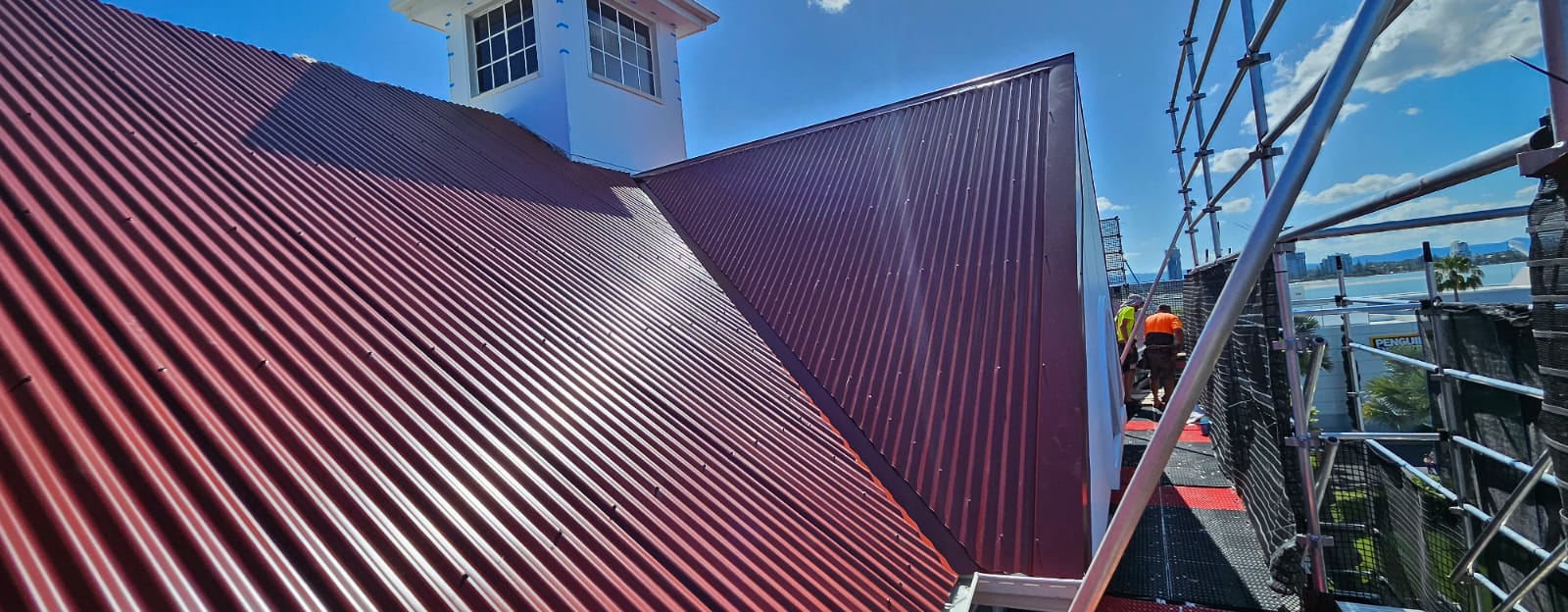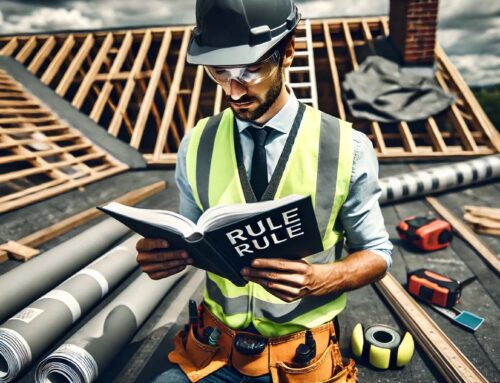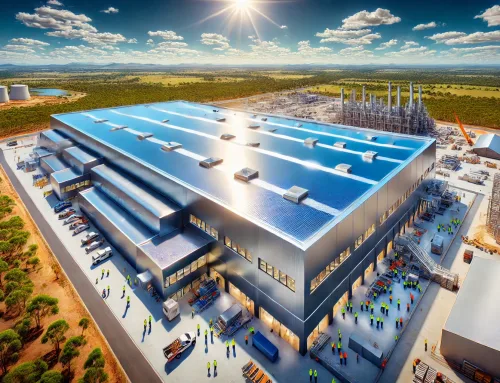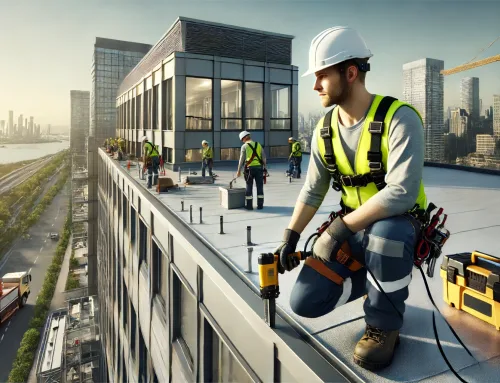Commercial roofs in Brisbane are susceptible to a range of challenges that can result in expensive repairs and upkeep. Issues such as roof leaks and inclement weather can significantly impact the structural integrity of these roofs, necessitating proactive measures from business proprietors to mitigate these prevalent concerns.
This discussion will delve into the origins and mitigation of roof leaks and water damage, the ramifications of storm damage and wind uplift, and methods for recognizing and rectifying flaws in roofing material and design. By identifying these issues early on and implementing appropriate solutions, businesses can maintain the optimal condition of their commercial roofs.
For expert advice and recommendations on preserving the durability and functionality of your commercial roof, refer to the following resource.
Overview of Common Issues
Common commercial roofing issues in Brisbane encompass roof leaks, weather-related damage, and maintenance challenges, which property managers frequently confront due to the varied range of roofing materials and environmental conditions present in the area.
If left unattended, these roofing issues can result in significant expenses for repairs. For instance, roof leaks have the potential to harm the building’s interior, impacting its structural integrity and potentially fostering mould growth. Weather-related damage, such as hail or strong winds, can gradually compromise the roof’s stability.
Regular maintenance plays a critical role in averting these problems, as it facilitates the early identification of potential issues before they escalate. Through a commitment to scheduled inspections and upkeep, property owners can extend the lifespan of their commercial roofs and uphold the safety of occupants.
Roof Leaks and Water Damage
Roof leaks and water damage rank highly among the primary concerns for commercial property managers in Brisbane. These issues frequently stem from moisture intrusion, which, if left unattended, has the potential to jeopardize the structural soundness of the building. Therefore, it is imperative to address these challenges promptly by implementing efficient waterproofing solutions and roof coatings.
Causes and Prevention
The primary factors contributing to roof leaks in commercial properties typically stem from ageing roofs, flashing issues, and insulation deficiencies. Roof ageing is a prevalent concern that can lead to leaks due to the gradual deterioration of materials over time, consequently increasing the roof’s vulnerability to water infiltration. Problems with flashing, such as incorrectly installed or damaged flashing surrounding roof apertures like chimneys or vents, can also facilitate water ingress. Insulation deficiencies have the potential to foster moisture accumulation and mould growth, further compromising the structural integrity of the roof.
To mitigate these issues effectively, it is imperative to conduct regular roof inspections, promptly address any damages, ensure proper flashing installation, and maintain adequate insulation levels.
Solutions for Repair and Maintenance
Efficient strategies for the repair and maintenance of roofs encompass the regular conduct of professional inspections and the engagement of experienced roofing contractors to execute cost-effective solutions.
Regular inspections play a crucial role in the early detection of potential issues such as leaks, cracks, or deteriorating materials. Once identified, the involvement of professional roofing contractors ensures the efficient execution of necessary repairs using high-quality materials. Furthermore, aside from addressing immediate concerns, these contractors can offer valuable guidance on preventive measures that can prolong the roof’s lifespan.
By investing in routine inspections and timely repairs, businesses can sidestep costly major repairs or premature roof replacements. This approach ultimately leads to cost savings in the long term.
Storm Damage and Wind Uplift
The vulnerability of commercial roofs in Brisbane to storm damage and wind uplift is a noteworthy concern. Extreme weather conditions, including hailstorms and high winds, present substantial risks that demand prompt attention to safeguard roofing integrity and minimise the potential for emergency repairs.
How Extreme Weather Can Affect Commercial Roofs
Severe weather conditions, which encompass wind, hail, and UV damage, have the potential to significantly impact both the longevity and structural soundness of commercial roofs. These adverse weather elements present formidable obstacles when it comes to upholding a robust and enduring roofing system.
High winds have the capacity to dislodge or damage roofing materials, thereby exposing the underlying structure to potential water infiltration and additional impairments. Hailstorms are capable of creating punctures and indentations in the roof, thereby undermining its ability to safeguard the building. Prolonged exposure to UV radiation has the capacity to deteriorate roof surfaces, precipitating the formation of cracks, color fading, and a reduction in waterproofing efficacy.
To mitigate these inherent risks and prolong the service life of commercial roofs, proactive maintenance strategies such as routine inspections, timely repairs, and the application of UV protective coatings are imperative.
Steps for Repair and Reinforcement
To effectively address storm damage and strengthen a commercial roof, it is imperative to conduct a comprehensive professional inspection and implement targeted repair and reinforcement strategies. The initial step in this process involves a meticulous evaluation to determine the scope of the damage, pinpoint any vulnerabilities, and develop a detailed repair plan.
Professional roofers possess the expertise to assess the structural soundness of the roof, identify potential safety risks, and propose solutions for fortifying and safeguarding the roof against future storms. Prompt emergency repairs are essential for averting additional damage and ensuring the well-being of the individuals within the building. It is crucial to promptly address any issues such as leaks, missing tiles, or structural deficiencies to prevent the need for more extensive and costly repairs in the future.
Roofing Material and Design Flaws
Roofing material and design deficiencies have the potential to cause substantial structural problems in commercial properties. Therefore, it is crucial to strictly adhere to roofing industry standards during the installation process to minimise potential issues and guarantee enduring performance.
Identifying and Addressing Structural Issues
The identification and resolution of structural issues in commercial roofs require thorough professional inspections and collaboration with experienced roofing contractors to ensure roofing safety and rectify design flaws. Meticulous professional inspections are essential for the detection of underlying issues, such as water damage, inadequate drainage, or weak structural elements that could potentially compromise the integrity of the commercial roof.
Experienced roofing contractors are instrumental in not only identifying these design flaws but also in offering effective solutions to prevent further deterioration and enhance the longevity of the roof. Through close collaboration with industry professionals, property owners can proactively address structural issues and uphold a secure and dependable roofing system for their commercial establishments.
Options for Replacement and Upgrades
When evaluating roof replacement and upgrades for commercial properties, it is advisable to explore sustainable roofing options and energy-efficient solutions. This approach can yield long-term benefits and is in line with considerations related to budgeting for roofing projects.
Selecting sustainable roofing materials, such as cool roofs, green roofs, or solar panels, can result in a reduction of energy consumption while simultaneously augmenting the overall value of the property. Additionally, the installation of energy-efficient roofing systems like TPO or PVC membranes can deliver enhanced durability and reduce maintenance costs over an extended period.
Conducting a comprehensive assessment of the current roof condition is crucial. Seeking guidance from experienced roofing professionals is recommended to identify the most appropriate and cost-effective solution for the commercial property in question.
Frequently Asked Questions
What are some common commercial roofing problems in Brisbane?
Some common commercial roofing problems in Brisbane include leaks, ponding water, damaged or missing shingles, and poor insulation.
How can leaks in a commercial roof be prevented?
Leaks in a commercial roof can be prevented by regularly inspecting and maintaining the roof, identifying and repairing any damaged areas, and ensuring proper drainage and ventilation.
What causes ponding water on a commercial roof?
Ponding water on a commercial roof can be caused by poor drainage, clogged gutters and downspouts, or a flat or low-slope roof that does not allow for proper water runoff.
What are the potential consequences of damaged or missing shingles on a commercial roof?
Damaged or missing shingles on a commercial roof can lead to leaks, water damage, and even structural damage if left unaddressed. They can also decrease the overall energy efficiency of the building.
How can inadequate insulation be a problem for a commercial roof?
Inadequate insulation in a commercial roof can result in higher energy costs, as it can lead to heat loss in the winter and increased heat gain in the summer. It can also cause moisture buildup and potential damage to the roof structure.
What are some solutions for common commercial roofing problems in Brisbane?
Solutions for common commercial roofing problems in Brisbane may include regular inspections and maintenance, repairing any damage promptly, ensuring proper drainage and ventilation, and installing adequate insulation. It may also be beneficial to consult with a professional roofing contractor for expert solutions.






